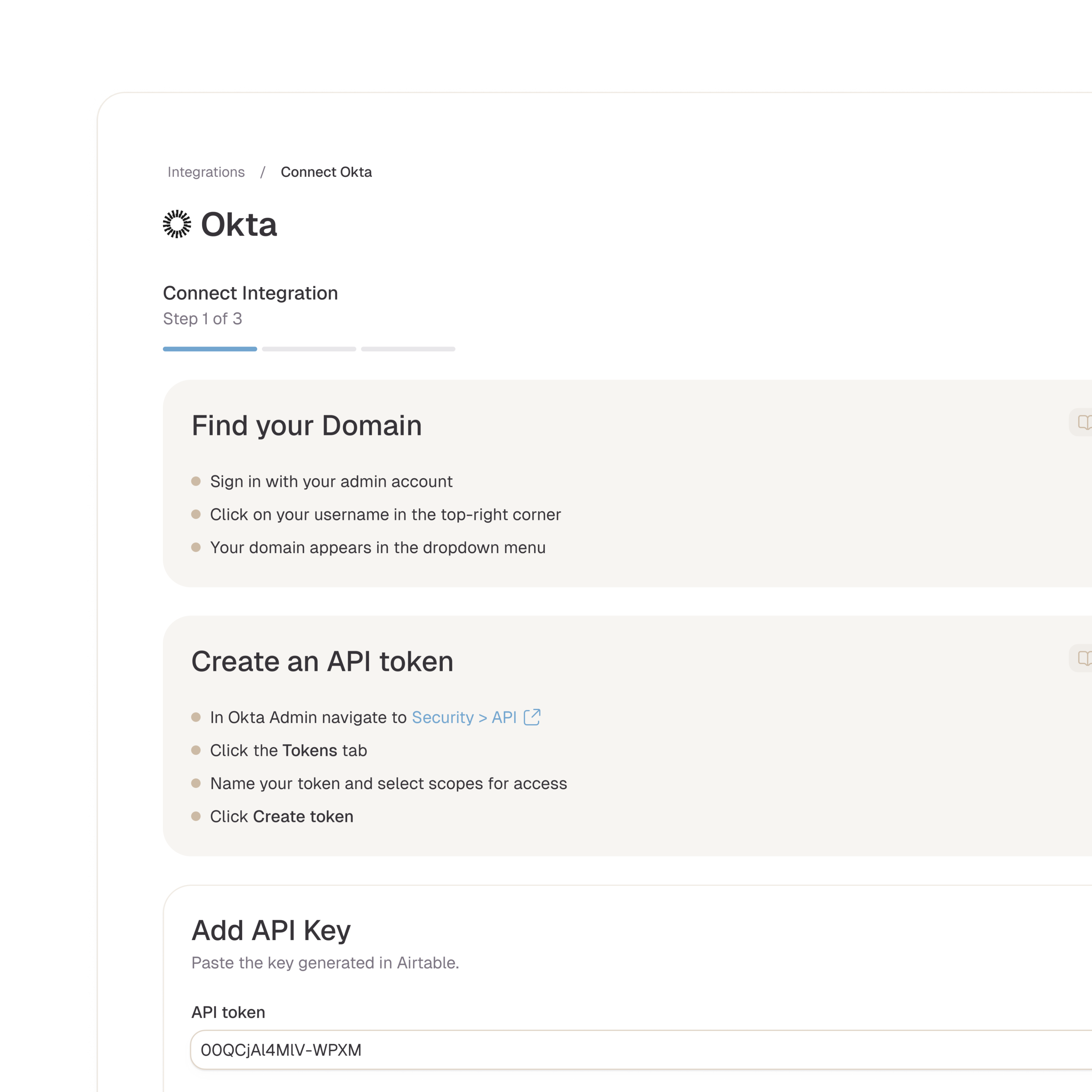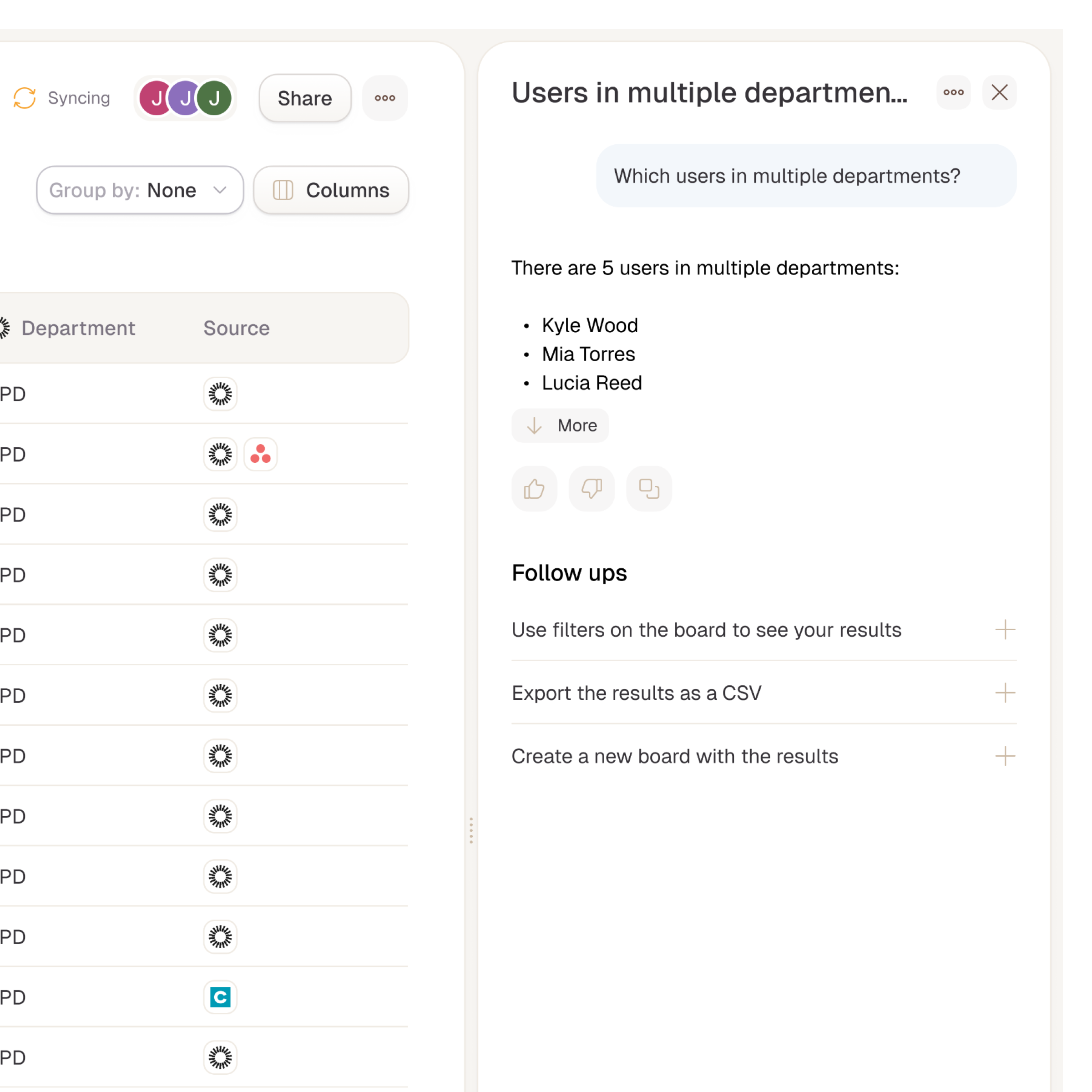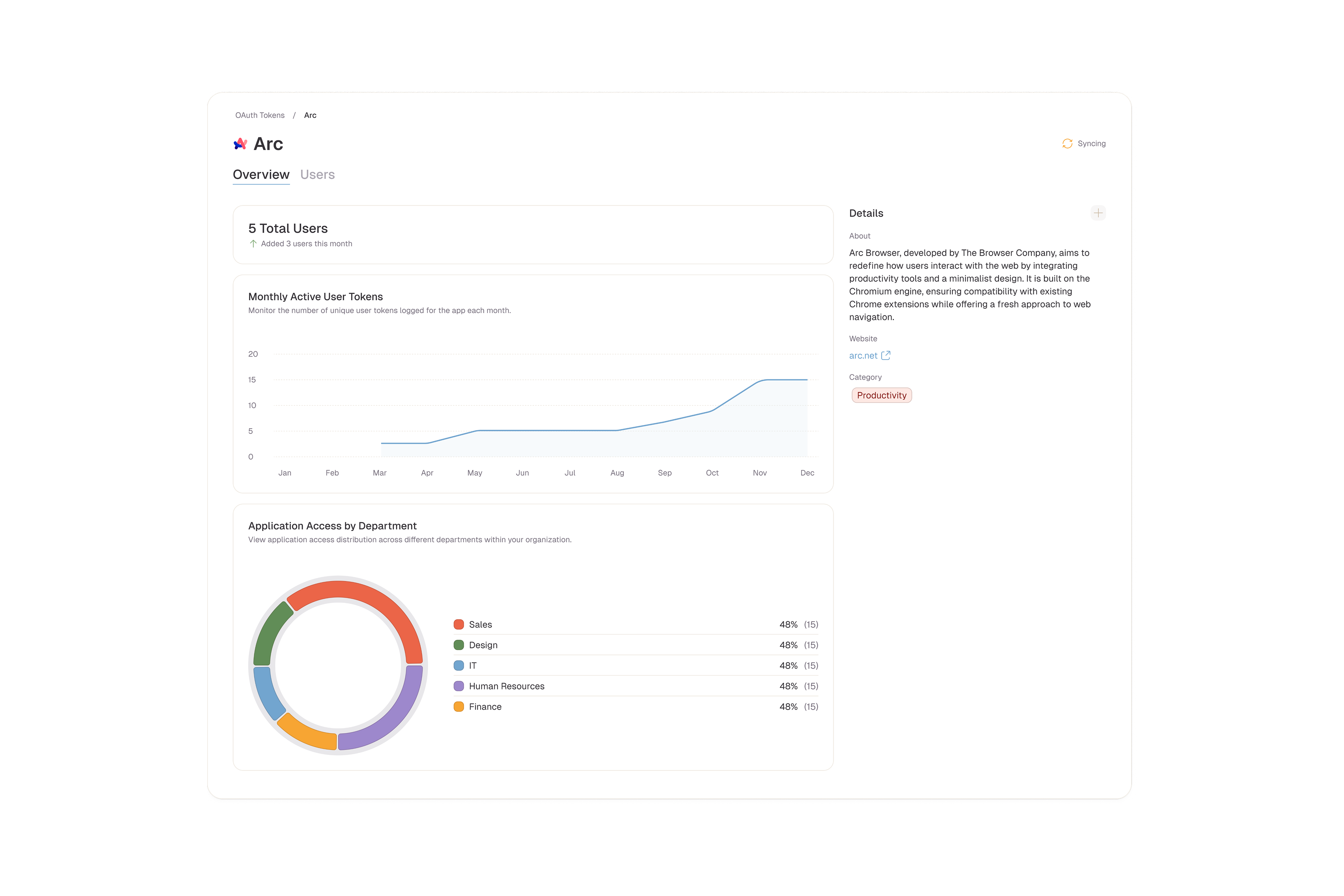
Stitchflow
Stitchflow gives IT teams the ability to reconcile and manage all their SaaS applications in one place, helping them eliminate duplicate tools, optimize license usage, ensure compliance, and maintain full oversight across the organization’s software stack.
0→1 Product Design
UX Research & Interviews
UI Design & Prototyping
Design System
Systems Thinking

ROLE
Staff Product Designer
TEAM
1 Project Manager
5 Engineers
1 Product Designer
5 Engineers
1 Product Designer
TIMELINE
2023 to 2025
WEBSITE
stitchflow.com
Overview
I joined Stitchflow as the founding designer in 2023, when the idea was little more than a sketch on a whiteboard. Over the next couple of years, I helped shape the product’s vision, design its foundation, and bring our first version to market, turning an early concept into something real and usable.


The problem
IT teams often struggle with tool fragmentation, where critical but complex data is scattered across multiple platforms. Each tool holds valuable information essential to their work, yet accessing and tracking this data across separate systems is time-consuming and prone to errors.
From Concept to Release
Much of the early work focused on research and ideation, exploring ways to present real-time, fine-grained data from multiple tools in a unified view. Behind the scenes, the designed data model structured relationships across tools and correlated data endpoints, allowing users to access connected insights seamlessly without needing to understand the underlying complexity. On the front end, we consolidated cross-tool data into a single, dynamic table that equipped agents with comprehensive information needed to optimize their IT environments.

Refining the Experience After Launch
Once the first version of Stitchflow launched and IT teams began using it, I started conducting user interviews to understand how they worked with the product and what challenges they encountered. These sessions revealed valuable insights: while the open-ended starting point encouraged exploration across various data sets, it also left many users unsure where to begin. To address this, I led additional interviews to identify the most common entry points, which we then turned into predefined views that guided users toward meaningful insights faster.
Simultaneously, we began developing complementary features such as smart alerting and conversational AI to help users find relevant data more intuitively.
Simultaneously, we began developing complementary features such as smart alerting and conversational AI to help users find relevant data more intuitively.


